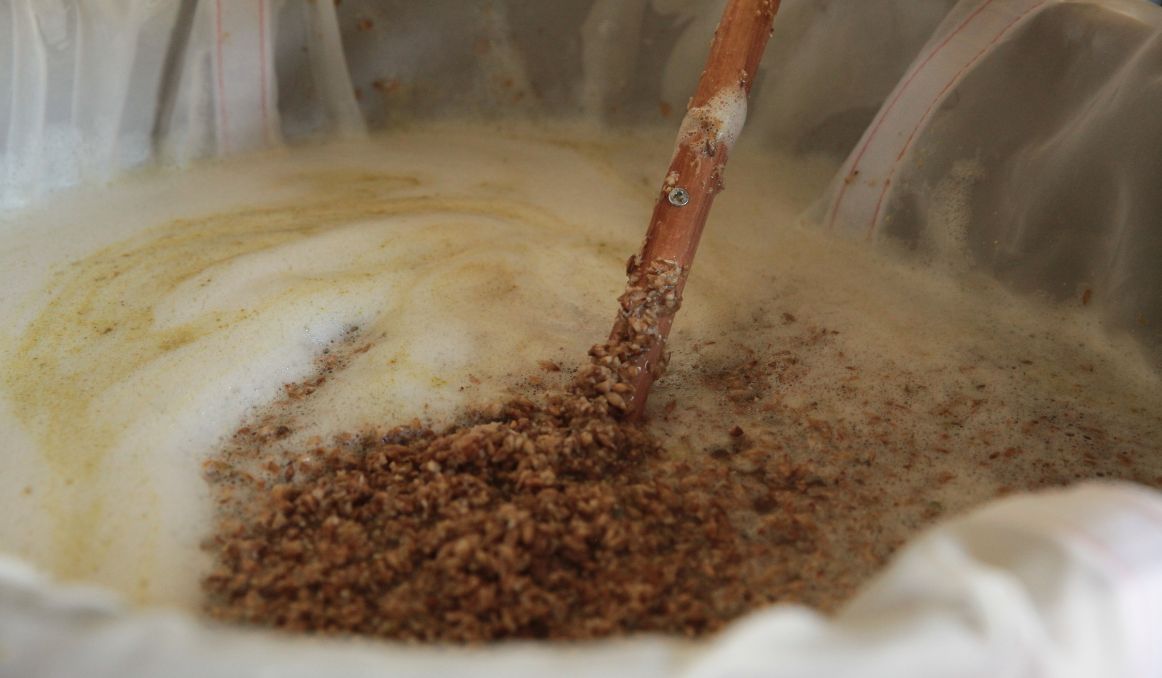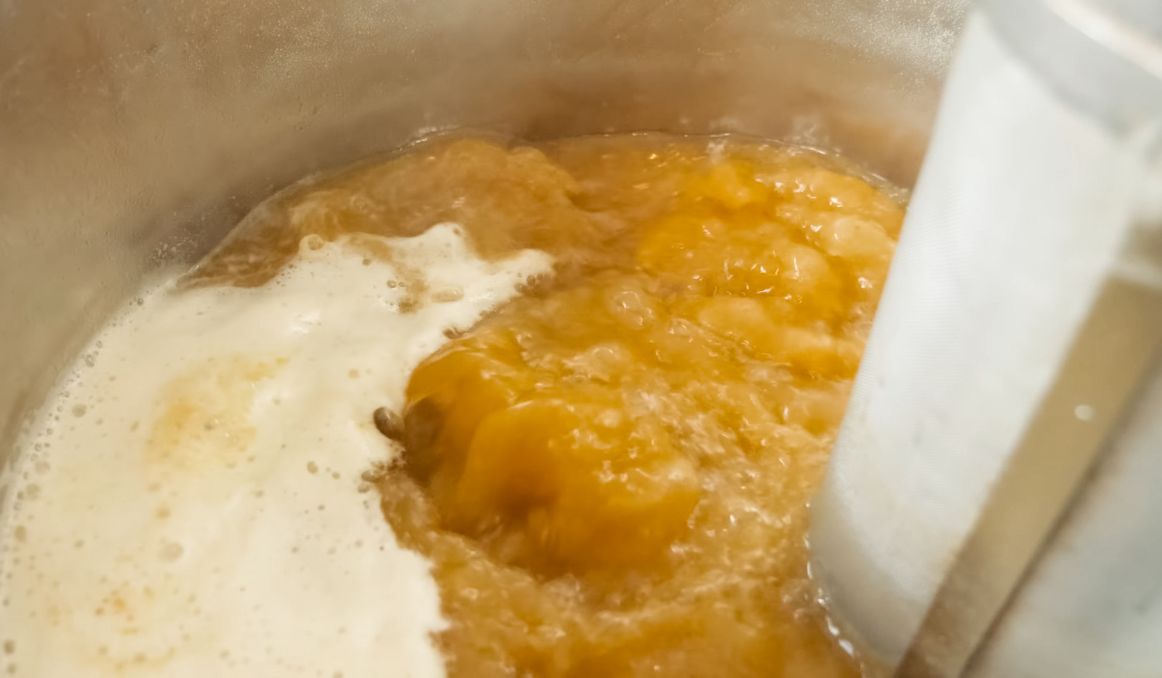The Role of Recirculating Mash: Efficiency and Clarity
If you are new to the all grain brewing process, you may have been hearing about the role of recirculating mash – efficiency and clarity. In extract brewing, the topic never comes up. So if you started there, this may feel like unfamiliar territory.
But in all grain brewing, whether for a home brewer, small brewer, or large scale brewer, mash efficiency is everything.

All Grain Brewing
Many new brewers begin experimenting with brewing using dry malt extract or liquid malt extract. Essentially, these extracts are concentrated, malted barley. The guesswork has been taken out of the brewing for you, and you don’t have to worry about managing proteins, lautering, sparging, and all of that fun brewing stuff.
However, you also have none of the control. You don’t get to control your grain, or a combination of grains. You have no say in your protein levels, in your haze, in your head and head retention, or in various other aspects that come along with brewing your own wort from scratch.
With all grain brewing, you not only get to choose from among a virtually endless variety of grain combinations, but you also get to experiment with myriad approaches to getting the most out of your grain.
One of those approaches includes mash recirculation.
What Is Recirculating Mash?
Recirculating mash is a process whereby you remove small amounts of wort during your mash in and then add it back in. This task is typically done with a pump, and it is done very gently, so as not to disrupt your grain bed.
The mash in is really the first step in the actual brewing of beer. You’ve chosen your grains, made sure they were melted, or even roasted them yourself, ground them up to expose all of their sugars, and now it’s time to brew.
Adding your crushed grains to water to create a porridge like consistency product, bringing it to a boil and allowing it to simmer for up to 60 minutes is the mash in.
After the initial mixing in of the grain in the wort, the grain will settle to the bottom of your kettle, and the liquid on top will continue to simmer.
To recirculate the mash, brewers simply pump the liquid slowly out of the kettle, and into another vessel, ideally kept at the same temperature as the kettle, and then pump that liquid back into the kettle.
An essential part of this process is to not disrupt the grain bed in the kettle, which would force the wort through the grain too quickly, not giving the enzymes the time they need to interact with the grain.
Some brewers recirculate mash for the last 15 minutes of the mash in process. Others recirculate for the entire 60 minutes.
Why Recirculate Mash?
Many brewers have found that recirculating the liquid above the grain bed allows the enzymes in the liquid to interact with a grain more effectively, thereby converting more carbohydrates into sugars.
Mash Efficiency vs. Brewhouse Efficiency

Why do we care about converting more carbohydrates and sugars? It all comes down to mash efficiency.
Mash efficiency is the percentage of the total possible sugars and dextrins from the mash that actually make it to the boil kettle. Basically, the more sugars and dextrins you can extract from your grain, the more efficient your mash in process is.
Have you optimized grain sugar extraction? Test it out with our handy Mash Efficiency Calculator!
Typically, we discuss mash efficiency in contrast to brewhouse efficiency.
Brewhouse efficiency is defined as the percentage of the total possible sugars and dextrins from the mash that actually make it to the fermenter.
In terms of economics, brewhouse efficiency is important, because you have to track your sugars all the way to the point of fermentation. But in terms of flavor and aroma, mash efficiency is critical, because essentially by the end of the boil, the stage has been set for your beer.
Of course, some will ask why not just buy more grain in order to extract more sugars? But, again, efficiency is the real key here.
In terms of profits, there is not a lot of wiggle room in brewing. Brewers must keep an eye on the prices of grain, and on the tremendous amount of labor that goes into producing a great beer. Recirculating mash is a great way to maximize on the fermentables in your grain without having to spend more money.
Clarity
An additional benefit to recirculating mash is the potential for clarity. As your recirculate mash, you will notice right away that the wort coming out of your kettle into the secondary vessel gets increasingly clear. This news is great for brewers looking to reduce haze and cloudiness in their brew.
Of course, whether or not a clear wort leads to a clear beer is in dispute. Remember, you still have to add yeast, and potentially also hops, and allow the fermentation process to unfold. Fermentation adds quite a bit of haze to beer both due to the addition of the yeast and to the interactions between the yeast and the proteins in the beer.
So it is really up to the brewers to experiment with this process and see what works for them.
Cheers!
Passionate about the beer and/or wine making process? So are we! If you’re interested in finding out how you can use our technology to control fermentation and monitor your yeast, save work hours and improve the cost-efficiency of your business, drop us a line at [email protected] or check out our product pages:
- Oculyze BB 2.0 (Better Brewing) Yeast Cell Counter App + Hardware
- Oculyze FW (Fermentation Wine) Yeast Cell Counter App + Hardware
Also, you can now get access to a fully functional demo account to test your yeast via our Web App. Completely free of charge and with no commitment to purchase.
Sources:


